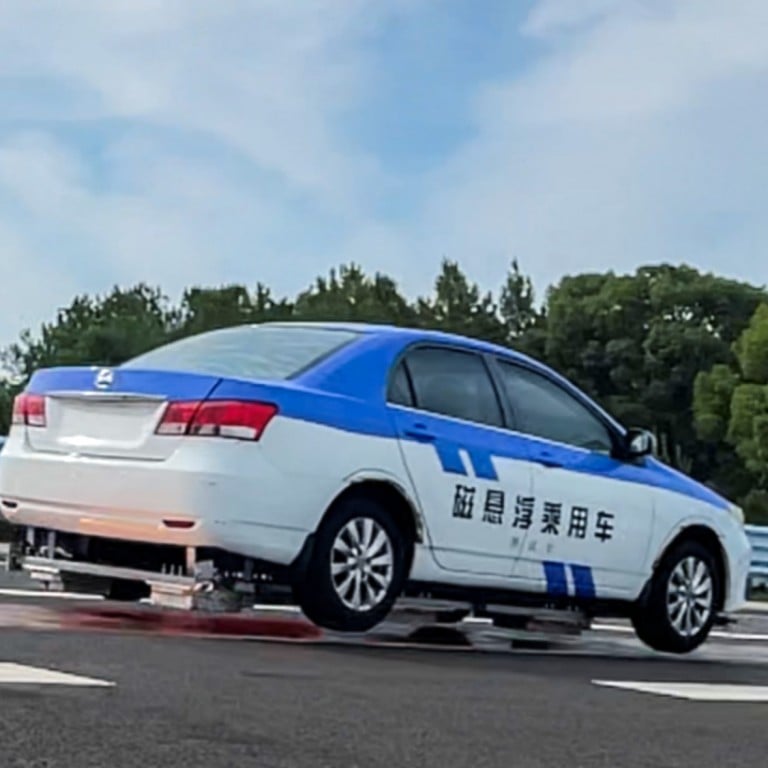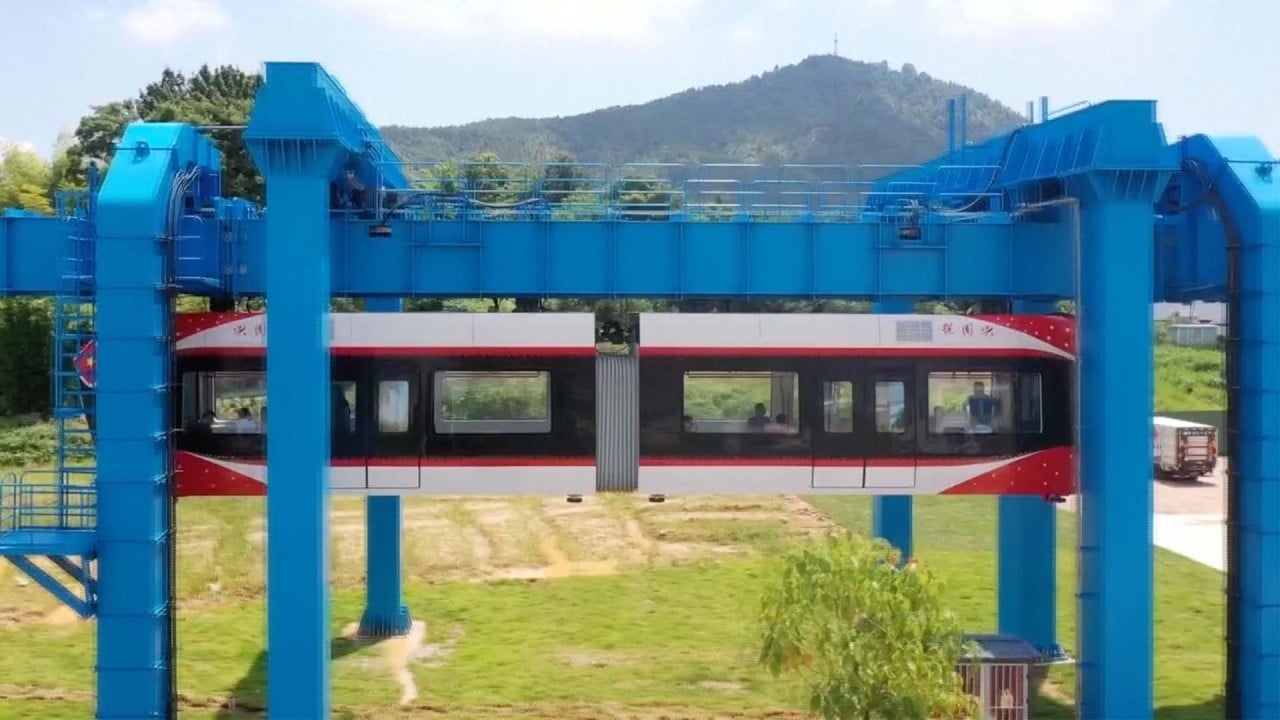
Chocks away for road test of China’s first maglev car
- Researchers use magnetic propulsion to raise a sedan 35mm above a track
- The country is a leader in the use of maglev technology, particularly in trains
Researchers in China have completed a road test for the country’s first maglev car, floating a modified sedan along a track using magnetic propulsion.
In the test, the 2.8 tonne car rose 35mm above the road’s surface before going an unspecified distance along the track, according to Xinhua Daily, a news outlet owned by Jiangsu’s Communist Party committee.
Developed by researchers from Southwest Jiaotong University in Chengdu, the car is equipped with permanent electromagnets and guided by conducting rails installed on a section of the Gaochun-Xuancheng Expressway in Jiangsu province.
Deng Zigang, a professor and team leader at the university, said the test would inform future experiments.
“Our next step will be to focus on the development of the actual vehicle to realise the beautiful vision of seeing the first maglev car ‘floating up and running’,” Deng was quoted as saying in the report last week.
“This move will provide critical support for the development of maglev cars in China.”
It unveiled the world’s first commercial maglev line in Shanghai in 2004, using German technology to offer services with a top speed of 430km/h.
The nation’s first domestically developed commercial maglev train completed a series of tests in March, with a design speed of 200km/h. It is controlled by a ground system and could be operated without a driver on board, Xinhua reported.
“At present, China is accelerating the construction of urban metropolitan areas and municipal railways,” Yang Ying, a chief scientist with rolling stock manufacturer CRRC Corporation, told state news agency Xinhua in March.
“Maglev trains can provide another option for green and intelligent intercity transport.”
Zhang Wenyue, deputy head of CRRC Zhuzhou Locomotive’s maglev research institute, said the trains were expected to be deployed on intercity and urban lines and run at 50-200km/h.
If the high-speed maglev trains go into service, the 1,000km trip between Beijing and Shanghai would be cut to 2½ hours, about half the time it takes by high-speed train now.
Last month, the nation launched the world’s first suspended maglev line built with permanent magnets, a system called the Red Rail, in eastern China’s Jiangxi province.
Unlike other maglev lines, the 800-metre experimental rail operates about 10 metres above the ground and runs at a speed of 80km/h.



